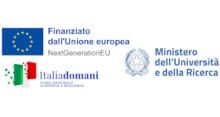MC-FORUM - Meteo and Climate exploitation of FORUM
La proposta ha come obiettivo il potenziamento di competenze e strumenti per lo sfruttamento ottimale delle misure di FORUM (Far-infrared Outgoing Radiation Understanding and Monitoring) nell’ambito della modellistica climatica. FORUM sarà lanciato nel 2027 come 9° Earth Explorer dell’Agenzia Spaziale Europea (ESA), e misurerà la radiazione infrarossa emessa dal pianeta ad alta risoluzione spettrale. Lo sfruttamento di tale misura sarà di grande interesse per la modellistica climatica, sia per lo studio approfondito dei bias del modello e per il tuning delle parametrizzazioni, sia per la comprensione dei “feedbacks” del sistema climatico. La presente proposta si propone di estendere l’implementazione di un simulatore di FORUM all’interno del modello EC-Earth a situazioni di atmosfera nuvolosa, per la simulazione di una climatologia di misure sintetiche e relativi studi di sensibilità della misura a cambiamenti dei parametri del modello e delle variabili climatiche.




